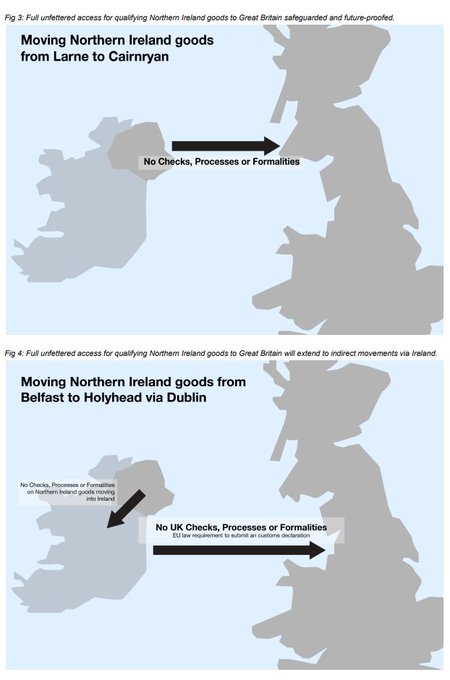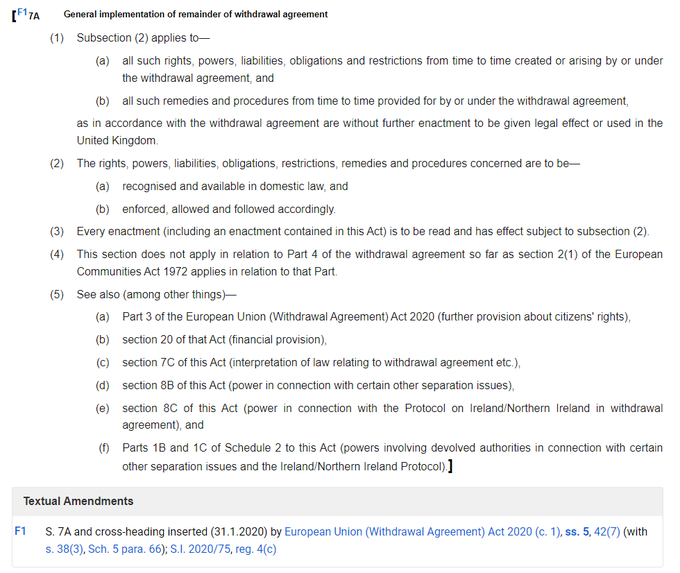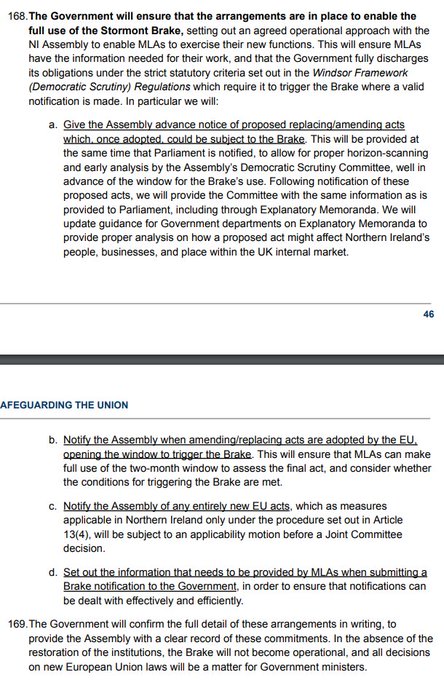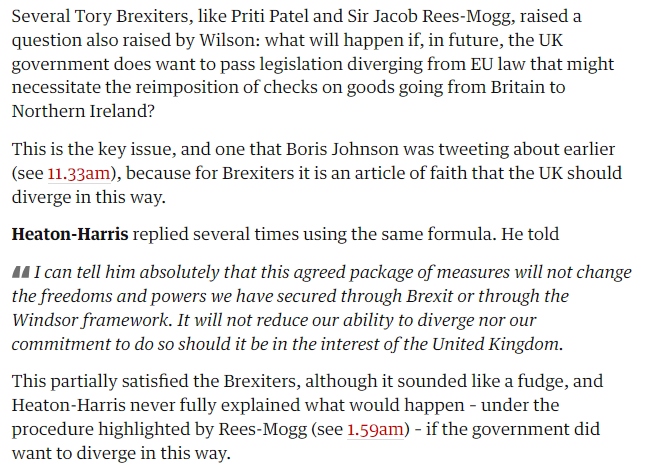The publication on Wednesday of a UK Command Paper “Safeguarding the Union” came largely out of the blue. For months the Secretary of State and budding author, Chris Heaton-Harris, has been talking with the Democratic Unionist Party (DUP) about returning to power-sharing in the Northern Ireland Executive.
Last year’s Windsor Framework was supposed to have achieved this, although at the time it was evident that a lot more effort had gone into squaring circles with the Commission than any of the parties in Stormont.
Any manner of carrots and sticks have been banished over the last 12 months, to no obvious effect, so hopes were not high at all about this current push.
But a deal does indeed seem to have been done, with the institutions get back into operation, some two years since they collapse.
In this post, I want to explore the elements of that deal as they relate to the Northern Ireland Protocol. This was nominally the major issue for the DUP, so we’d expect things to have moved clearly.
However, my top line is that this deal doesn’t really make any major change to what was agreed in Windsor, so any argument that London moved mountains here is not really in accordance with facts on the ground.
The Command Paper is a hefty tome, filled with many pages of reminders of what’s what and lofty promises of what will be. Take those bits out and you’re left with, well, not much.
It sets out 24 (count ’em!) ‘measures the Government is committed to’, which feels like a relic from the ‘never mind the length, feel the width‘ school of marketing.
As much as is possible, those measures break down into:
- 6 items of legislation (rolled into two instruments here)
- 5 new institutional arrangements
- 5 commitments/promises on things (not) to do
- 4 ongoing pieces of work
- 2 procedural changes
- 1 clarification
- 1 relabelling (of the green lane)
You’ll notice that this is all UK internal work, rather than anything that immediately requires EU agreement, rather going against any idea of changing the Protocol or Windsor.
Indeed the only directly EU-involving piece of this puzzle was a draft Decision of the Withdrawal Agreement’s Joint Committee, which arrived on the Tuesday afternoon and which allows of goods on ‘sale to or use by an end consumer’ in GB to be treated as ‘non-commercial processing’ (as defined by Decision 1/2023), which in turn makes it non-risk under Art.5 of the Protocol.
This eases checks on more goods, including agri-foods crossing into Northern Ireland.
Which is nice, not least because it lets the Command Paper include this reassuring graphic (as long as you glide over ‘qualifying’):
This is not a major change, in the round. Interacting with various contacts in Northern Ireland, it’s clear these changes still leave significant volumes of at-risk good movements, even as compliance and monitoring still has big holes in it, making problems down the line very likely.
Even the legislative changes aren’t as grand as they first appear.
To argue that you’ve put a problem to rest through legislation that amends other legislation only really points up that you can amended the amended legislation down the line, should London feel so inclined. And for a DUP that’s been shown just how much a nominally sympathetic British government cares about changing course on this topic, that’s not a great look.
Any way, the EU(W)A 2018 amendment bears some further inspection. Section 7A of that Act (below) provides a mechanism for dynamic adjustment to new EU rules under the Withdrawal Agreement (and Protocol). But note that the proposed change simply refers back to Windsor, notably the Stormont Brake.
As we discussed at the time, the issue with the Brake isn’t the hand-over from Stormont to London of a request (which is what this amendment will tighten), but the performance of the numerous steps that Stormont has to do in order to get there in the first place.
Stormont will be buried in the accumulated pile of stuff that’s built up over the last two years, plus the on-going ‘normal’ workload, so whether it ever had enough capacity for proper engagement, planning, scrutiny and action to operationalise the Brake is open to debate.
The Command Paper does offer some London support in all this, but whether and how that works is still open.
And that’s most of what I can usefully add here.
Heaton-Harris was very careful in his words in Wednesday’s Common’s statement: his words (below) are factually correct, but also a deflection from what both Tory and DUP MPs were asking, namely whether the UK had ‘full ability’ (in Patel’s phrase) to not apply EU law.
The UK still commits to apply EU law under the Protocol and while it can demure from applying new relevant rules, the EU is able to apply ‘appropriate remedial measures’ under Protocol Article 13.
For more analysis, I’ll point towards the excellent pieces by Colin Murray, David Henig and Joel Reland. Suffice to say that the locus of this deal is the politics and the optics: if it works in getting back to an operational Executive in Belfast, then the legal side of it is marginal.
Until it’s not.





